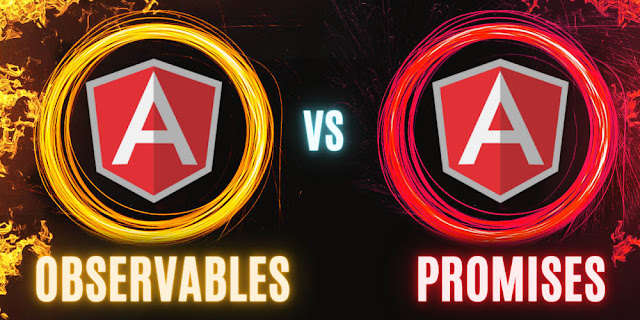Promises vs. Observables in Angular: Decoding the Asynchronous Dilemma
 |
| Source: Dev.to |
Understanding Promises in Angular
Overview:
Promises are a fundamental part of JavaScript, providing a straightforward way to handle asynchronous operations. In Angular, Promises are commonly used for one-time events, such as fetching data from an API or reading a file.
Key Characteristics:
Single Value: Promises handle a single value, resolving with either a successful result or a failure.
Immutable: Once a Promise is settled (either resolved or rejected), its state cannot be changed.
.then() Syntax: Promises utilize the
.then()method to handle successful resolutions and the.catch()method for errors.
Use Case Example:
const fetchData = new Promise((resolve, reject) => { // Simulating fetching data from an API setTimeout(() => { const data = { message: 'Data successfully fetched!' }; resolve(data); // Fulfill the Promise with the fetched data }, 2000); }); fetchData.then((result) => { console.log(result); // Process the successfully fetched data }).catch((error) => { console.error(error); // Handle any errors that occur during data fetching });
Exploring Observables in Angular
Overview:
Observables, on the other hand, are a more powerful and flexible tool for handling asynchronous tasks in Angular. They are part of the RxJS library and are preferred for scenarios involving continuous data streams, such as real-time updates or user interactions.
Key Characteristics:
Multiple Values Over Time: Observables can emit multiple values over time, making them suitable for handling streams of data.
Cancelable: Observables can be canceled using the
unsubscribemethod, preventing memory leaks.Extensive Operators: RxJS provides a plethora of operators to manipulate, filter, and transform data emitted by Observables.
Use Case Example:
import { Observable } from 'rxjs'; const fetchDataObservable = new Observable(observer => { // Simulating emitting data over time let count = 0; const interval = setInterval(() => { const data = { message: `Data stream ${count}` }; observer.next(data); // Emit the next value in the data stream count++; if (count === 5) { clearInterval(interval); // Stop emitting values observer.complete(); // Notify the completion of the data stream } }, 1000); }); const subscription = fetchDataObservable.subscribe( result => console.log(result), // Process each emitted value error => console.error(error), // Handle errors () => console.log('Data stream complete') // Notify the completion of the data stream ); // To cancel the Observable // subscription.unsubscribe();
Choosing Between Promises and Observables in Angular
Both Promises and Observables serve their purpose in Angular development, and the choice depends on the specific requirements of your application.
1. Use Promises when:
You are dealing with a one-time operation, like fetching data once.
You prefer a simpler syntax for handling asynchronous tasks.
Your use case involves a single value, either success or failure.
2. Use Observables when:
You are working with continuous data streams or events.
You need advanced features like cancellation or want to manipulate emitted data.
Your application requires the power and flexibility provided by RxJS operators.
Conclusion:
In the vast sea of frontend development with Angular, mastering the art of asynchronous programming is essential. Understanding the differences between Promises and Observables equips developers with the knowledge to make informed decisions based on the specific needs of their applications.
As you navigate the asynchronous seas of Angular development, consider the nature of your tasks and choose the tool that aligns best with your goals. Whether you opt for the simplicity of Promises or the versatility of Observables, both play integral roles in creating responsive and efficient Angular applications.


Comments
Post a Comment